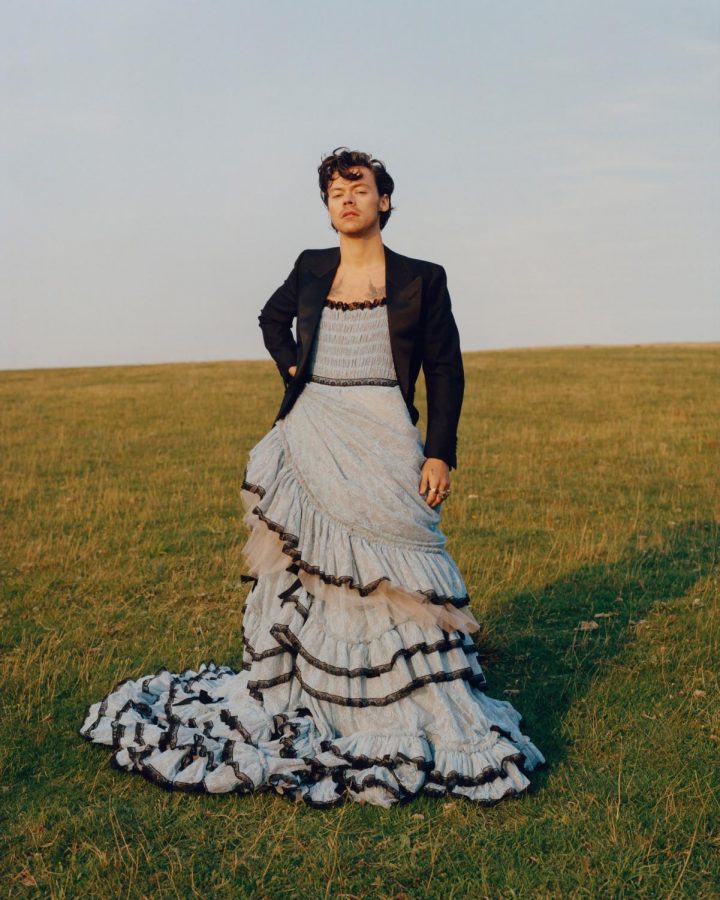Why Harry Styles’s Vogue Cover Angered Conservatives
Harry Styles in a dress, as tweeted by Vogue Magazine
January 7, 2021
“Bring back manly men,” tweeted Candace Owens, a well-known conservative commentator, in response to Harry Styles’s December issue of Vogue. Sporting a blue lace Gucci dress on the front cover, Styles made history as the first solo male cover of American Vogue. Not only was his cover a first in the history of the magazine, but it was also a bold statement on clothing and expression.
Styles covering Vogue in a dress is a symbol of society’s growing rejection of the gender binary. It stands as a symbol of freedom to wear whatever one wants, regardless of whether a label declares it men’s or women’s clothes. Whether it be his sheer lace jumpsuit at the Met Gala or the bright, flamboyant suits he wears on tour, Styles has broken the barriers of fashion by challenging norms throughout his solo career.
Though Styles is by no means the first to challenge said barriers—musicians such as David Bowie and Prince are known for their androgynous style—there is no denying this is an unprecedented moment.
However, conservatives such as Candace Owens and Ben Shapiro were quick to voice their disapproval of Styles in a dress. “There is no society that can survive without strong men.” Owens tweeted. “The East knows this. In the West, the steady feminization of our men at the same time that Marxism is being taught to our children is not a coincidence. It is an outright attack.”
Owens’s tweets reflect the fear of changing the gender binary that maintains traditional society. The gender binary refers to the classification of male or female, which consequently dictates clothing styles, roles, and social behavior. Men are expected to be dominant and stoic, while women are meant to be submissive and emotional. For Owens (and others who agree with her), society can only continue if it remains rigid in all aspects like gender, race, and class. This also explains her claim that Marxism is linked to “the steady feminization of our children.”
This is why a seemingly harmless picture of a Styles in a dress has caused such panic for traditionalists. “When you take away ‘There’s clothes for men and there’s clothes for women,’” Styles said. “Once you remove any barriers…you open up the arena in which you can play….Anytime you’re putting barriers up in your own life, you’re just limiting yourself.” This rejection of gendered clothing exposes the fragility of these norms. With celebrities such as Styles, and even the movement of boys wearing skirts and dresses on TikTok, more and more young people have embraced the blurring of lines between masculine and feminine.
After all, as actor Elijah Wood tweeted, “Masculinity alone does not make a man, in fact, it’s got nothing to do with it.” Prohibiting men from expressing themselves through clothing because it is not perceived as “manly” only contributes to the toxic masculinity that is already an issue today. How does a man being confident in himself make him weak?
Where people find freedom in fluidity, people like Owens find destruction. While Styles and others embrace freedom and independence, Owens embraces one that relies on sexism and bigotry.

















































































































































